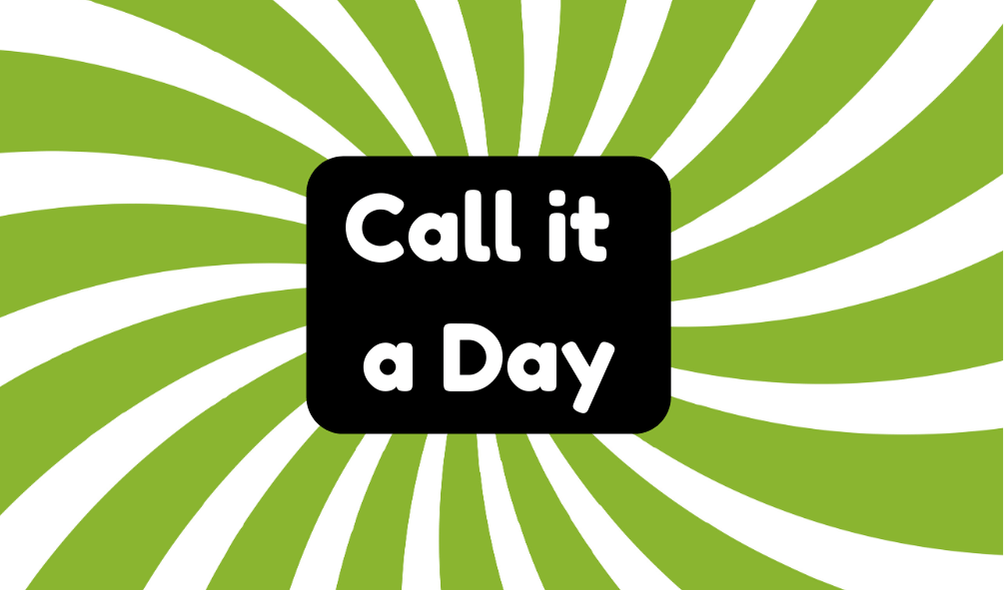"Call it a day" means to stop working or conclude an activity, highlighting the cultural need for rest. Originating in the 19th century, it emphasizes the importance of recognizing limits in a demanding world. Common examples include deciding to stop early or acknowledging fatigue after a long task. While it promotes self-care, overusing the phrase can suggest laziness. Understanding its significance reveals deeper insights into balancing work and well-being. To grasp its context further, exploring related phrases is beneficial.
Synonyms
The expression "call it a day" has several synonyms that capture its essence of ending work or ceasing an activity. These alternative phrases highlight the concept of work cessation and provide various nuances to daily closure.
- "Wrap it up"
- "Finish up"
- "Close the books"
- "Hang it up"
Using these expressions can bring a fresh perspective to mundane routines. However, it is essential to remain mindful of when and why work cessation occurs, as the motivations behind these phrases often reflect individual circumstances and broader societal trends. Embracing these synonyms allows for a more dynamic approach to daily tasks.
Example of Sentences
Demonstrating the concept of "calling it a day," various example sentences illustrate its practical use in everyday language. These examples in context show how people decide to stop their activities, often for reasons that reflect their personal circumstances or challenges.
- After a long meeting, Sarah decided to call it a day to recharge.
- Following a tough project deadline, Tom chose to call it a day instead of pushing through.
- Recognizing burnout, Jenna concluded it was time to call it a day and rest.
- Despite not meeting all her goals, Lisa felt satisfied enough to call it a day.
These creative interpretations enrich understanding.
Origin
Originating from the habits of workers stepping away from their tasks, the phrase "call it a day" has an interesting background. The historical usage traces back to expressions like "call it half a day," documented in 1838. It signifies a cultural significance as a farewell to work before the day's end, allowing individuals to recognize their limits. The first recorded use of "call it a day" in 1919 marks a shift in language, reflecting evolving work practices. As society progresses, such phrases adapt, illustrating a collective understanding that ceasing efforts is sometimes essential for well-being, pushing boundaries of traditional work ethic.
Collocations
Collocations play an essential role in understanding how phrases like "call it a day" interact with other words in everyday language. These combinations reveal insights into work cessation within the context of a daily routine. Recognizing which phrases often accompany "call it a day" can enhance comprehension and usage. Some common collocations include:
- "decide to call it a day"
- "it's time to call it a day"
- "call it a day early"
- "call it a day after work"
Such phrases not only embody cultural sentiments but also reflect the importance of recognizing when to stop, a significant skill in modern life.
How to Use in Everyday Language
Understanding how to use the phrase "call it a day" in everyday language is vital for effective communication, especially in work-related contexts. This expression can seamlessly fit into casual conversations, signaling a collective acknowledgment of work fatigue. Individuals might employ it to indicate they've reached their limit and want to stop for the day. However, using it too frequently risks diminishing its impact and may come across as an excuse for laziness. Therefore, while it serves as a useful expression, moderation is important. Innovatively integrating this phrase can enhance dialogue, but it should never replace genuine effort or engagement in tasks.
Why Is It Still Relevant Today?
The phrase "call it a day" retains its relevance in contemporary society due to the ever-increasing demands placed on individuals in both professional and personal spheres. In the context of modern work, where burnout is a pressing issue, knowing when to stop can be seen as an act of self-preservation. Its cultural significance lies in emphasizing the importance of balance and mental well-being. However, the pressure to continuously perform often undermines this concept, leading to hesitance in making such a decision. By advocating for rest, "call it a day" challenges the relentless pursuit of productivity prevailing today.







